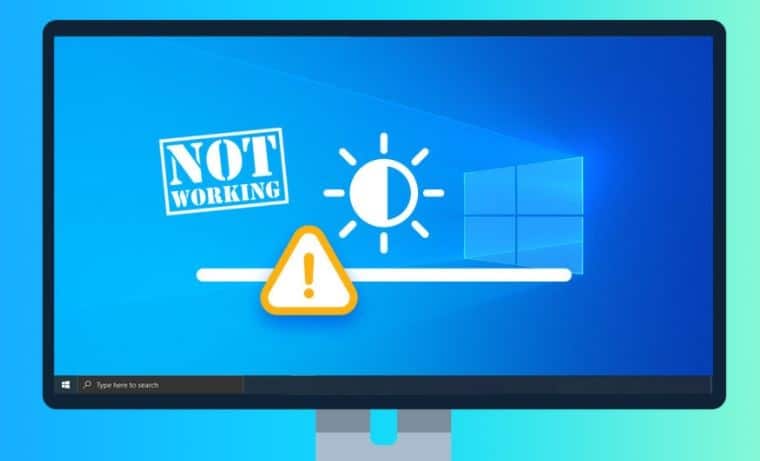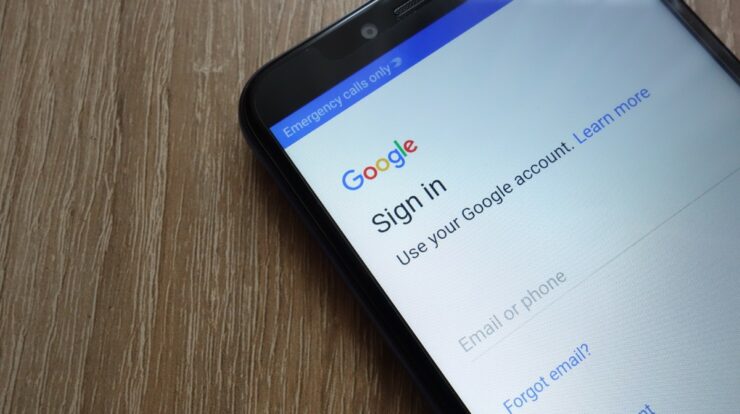
Windows Brightness Control slider is 1 of the essential utilities for Windows users. If it is not operating correctly, that needs to be fixed immediately. The brightness control allows you to prevent your eyes from needless strain and saves battery life while working on a computer for extended hours. You can constantly adjust the brightness settings as per your needs. Nevertheless, sometimes you aren’t able to modify the brightness. If you are encountering the same problem, this guide is for you to fix Brightness Control Not Working error.
Usually, the Brightness Control Not Working error arises because of the display drivers or the Windows power settings. Furthermore, the first trick to apply when you cannot control windows brightness includes restarting your computer or checking for Windows updates.
Even after trying these fundamental ways, you can not use a brightness control slider. Check out the steps explained below.
[lwptoc]
How to Solve Windows 10 Brightness Control Not Working Issue?
In this section, we will cover:
- Update Display Adapters Drivers
- Enable Adaptive Brightness
- Enable PnP Monitor
- Update The Registry
Procedure 1: Update Display Adapter Drivers
The first and the only way to correct the Brightness Control Not Working on Windows 10 is by updating the Display Adapter. Here’s how to do this manually:
- Open Device Manager from the Start Menu.
- Head to Display Adapters and tap the arrow beside to expand the menu.
- Now, right tap on the available Driver and choose to Update Driver.
- You will view a dialog box asking you to choose one option out of two.
- Choose Automatically search for the updated driver software.
- Wait for the process to complete. Once done, restart your computer to implement changes.
Alternatively, we always suggest you have an automatic Driver Updater installed on your computer so that you get timely updates of any corrupted or outdated drivers that need to be fixed. This will limit you from such random errors. We recommend using Smart Driver Care, a robust driver updater utility for your Windows computer. It takes complete care of your system drivers and lets you fix all the outdated or corrupted ones in a single click. Here’s how to use Smart Driver Care:
- Download and Install Smart Driver Care.
- Start the application on your system.
- On the 1st screen, you will see a Scan
- Tap on it and wait for the Scan to finish.
- You will then see a list of corrupted and outdated drivers.
- Tap on Update All to update all of them at once.
- Or you can pick any particular driver and tap on Update Driver located beside it.
- Restart Your computer to apply changes.
Not just this, Smart Driver Care gives you the ability to backup & restore backed-up drivers in case something happens accidentally.
Procedure 2: Enable Adaptive Brightness
To allow Adaptive Brightness on Windows, follow these actions below:
- From the Search box or Start menu, open Control Panel.
- Navigate to Hardware and Sound.
- Tap on Power Options.
- On the next screen, you will see Change plan settings highlighted in blue color. Tap on it.
- Then, tap on Change advanced power settings.
- On the new window, tap on Display to open further options.
- Change the available choices to the desired settings.
- Tap Apply and then OK.
Procedure 3: Enable PnP Monitor
If the last procedure does not work, you can try enabling the PnP monitor. Here’s how to do this to fix Brightness Control Not Working:
- Start the Run window by pressing the Win+R key together. Now, type in devmgmt. MSc to start the Device Manager on Windows.
- Tap on Monitors and expand the menu.
- You will see a Generic PnP monitor. Right-click on it to check if it is enabled.
- If not, tap on Enabled device. If it is enabled, disable it.
- Now, start to the Action tab at the top of the Device Manager.
- Then pick Scan for hardware changes.
- Run the Scan.
That’s all.
Procedure 4: Update the Registry
The last procedure in our guide to fixing Brightness Control Not Working on Windows is through Registry update.
Note: Please note that updating the Registry includes severe changes to your PC. If not done rightly, serious problems may occur.
To continue updating the Registry, follow the actions below:
- Open Run window using Win+R keys together. Type in Regedit to open Registry Editor.
- Continue to HKEY_LOCAL_MACHINE.
- Tap System > ControlSet001 > Control.
- Now, Select Class{4d36e968-e325-11ce-bfc1-08002be10318}000.
- Then set FeatureTestControl DWORD’s value data to 0000ffff.
- This should resolve your problem of brightness not working.
Also, Check:
Final Thought:
Although updating the display driver using both manual methods or using Smart Driver Care will fix Brightness Control Not Working error. If in case this does not resolve, there are other ways listed in the article. You can try them out & let us know if you have any queries or suggestions.


